Holi, often known as the "Festival of Colors," is a colorful and exuberant Hindu festival celebrated with zeal and enthusiasm throughout the Indian subcontinent and Nepal. It represents the triumph of virtue over evil, the arrival of spring's flowering beauty, and the promotion of community cooperation and friendship. Holi, which happens on the last full moon day of the Hindu lunar month of Phalguna, generally in March, signals the end of winter and the beginning of spring, a season full of color and vibrancy.
Holi festival has a special appeal in Nepal, a nation rich in traditions and culture. Aside from the religious importance associated with Hindu mythology, the Nepalese celebration reflects the country's unique cultural mix. While all age groups enjoy the celebrations, the youngsters are especially passionate, smearing each other with colorful powders, hurling water balloons, and participating in traditional songs and dances. The event emphasizes the feeling of togetherness, love, and joy via this riot of colors and activities, eliminating social divisions and establishing a sense of communal harmony.
Join us on a colorful trip across the breathtaking landscapes of Nepal to discover the myriad colours of the Holi festival, a celebration that transcends mere colors, weaving together tales of history, mythology, and the colourful fabric of Nepalese culture.
Importance of Holi in Nepal
Holi festival in Nepal reflects the country's vibrant cultural, spiritual, and agricultural fabric. It is a time of happiness and unity, when the nation celebrates life, love, and the enduring spirit of community harmony.
Cultural Unity and Harmony:
In Nepal's multiethnic landscape, the Holi festival is a significant event that promotes unity and harmony among diverse communities. As people gather together to celebrate, caste, creed, and ethnic distinctions vanish, paving the way for cultural exchange and camaraderie. As people visit their friends and family to play with colors and share celebratory treats, the festival promotes friendship and benevolence.
Spiritual Resonance:
Holi is spiritually anchored in Hindu mythology, symbolizing the triumph of virtue over evil. The story of the demon monarch Hiranyakashipu and his son Prahlada, a devout devotee of Lord Vishnu, is one of the legends associated with Holi. Each time Hiranyakashipu tries to murder Prahlada, Vishnu saves him, demonstrating the protective power of divine forces. The conflagration ceremony known as 'Holika Dahan' commemorates the burning of the demon Holika, who attempted to murder Prahlada, signifying the victory of faith and devotion over demonic forces.
Agricultural Relevance:
Holi is celebrated in Nepal, a country with agrarian origins, to commemorate the end of winter and the advent of spring – a time of rebirth and renewal. The festival coincides with the harvesting of the winter crop, and it's a time when farmers exult and honor the gods for a bountiful harvest. The riot of colors at the festival represents the various tints of the springtime, when blossoms flourish and fields are prepared for sowing the new produce.
Preserving Traditions and Customs:
Holi in Nepal is not limited to the use of colored powders. The festival is intricately interwoven with numerous traditional customs and rites. In various regions of Nepal, communities commemorate the festival in distinctive ways, preserving age-old traditions and folklore. These customs frequently involve traditional melodies, performances, and rituals that transmit Nepal's rich cultural heritage from generation to generation.
Tourist Attraction:
Holi has emerged as a major tourist attraction in Nepal in recent years. The celebrations, which are characterized by music, dance, and a kaleidoscope of colors, attract travelers from around the globe. Tourists flock to the streets of Kathmandu and Pokhara to immerse themselves in the festive atmosphere, photographing the vibrant moments and participating in community celebrations, thereby promoting cultural tourism in the nation.
Purpose of Our Blog
In a world where cultures are broad and different, festivals like Holi connect people together by providing insights into rich history and vitality traditions and customs. We hope to go on a bright journey that digs deep into the spirit of the Holi celebration as celebrated in Nepal's magnificent landscapes through this blog. Our mission is multifaceted, and we've outlined the objectives that are driving this colorful adventure below:
1. Documentation and Preservation of Cultural Heritage:
This blog aims to chronicle the rich cultural traditions that characterize Holi festivities in Nepal by capturing the many aspects of the festival. Its goal is to preserve these stories for future generations, building a strong respect for Nepal's cultural legacy.
2. Educational Resource:
This site aims to be a thorough resource for anybody interested in learning about the unique customs and significance of the Holi celebration in Nepal. We hope to provide readers with a comprehensive grasp of the festival's historical, cultural, and spiritual components via rich observations and anecdotes.
3. Tourism Promotion:
The blog attempts to showcase Nepal as a dynamic tourism destination, particularly during the Holi season, through descriptive words and a vibrant picture trip. We hope that by highlighting the festivities and the social cohesion that the festival generates, we might inspire people to come and experience the cheerful events for themselves, therefore increasing cultural tourism in the nation.
4. Interaction and Community Engagement:
The blog aims to engage the community by providing personal tales and first-hand experiences, inviting readers to submit their own experiences and stories. We intend to establish a community where folks can connect and communicate while celebrating the happy spirit of Holi through interactive aspects such as comments and debates.
5. Celebrating Togetherness and Differences:
At its heart, this site celebrates the Holi festival's harmony and variety. We hope to highlight the magnificent tapestry of unity in variety that characterizes Nepalese society by exploring unique cultures, traditions, and festivities throughout different areas of Nepal.
Holi Festival Facts
|
Festival Name |
Holi (Fagu Purnima) |
|
Festival Time |
Late February or March |
|
Observed by |
Hindus, Newar Buddhists, Jains and other non-Hindus |
|
Festival Type |
Religious, Spring Festival |
|
Festival Date (2024) |
Rest of Nepal : 25 March Terai Region: 26 March |
|
Legends |
Krishna, Vishnu, Kama and Rati |
|
Festivities |
Holika Dahan, Bonfire, Playing with colours |
|
Frequency |
Annually Celebrated |
Origin of Holi Festival
Holi is one of the most joyful festivals in Nepal and other South Asian countries. It has its roots in old Hindu traditions and myths, which have been passed down through the years. Here, we talk about the history of this exciting festival:
Ancient References
-
Scriptural References: The earliest mentions of a festival resembling Holi can be found in ancient scriptures like the ‘Puranas’ and the poems of the 7th-century poet, Harsha. Additionally, the famous Indian play "Ratnavali," written by Harsha, vividly describes the festival's spirit, celebrating love and colors.
-
Historical Frescos and Art: Historical artifacts, including frescos and paintings, hint at the festival's age-old lineage, often depicting scenes of people engaging in festivities akin to Holi, symbolizing its deep roots in the subcontinent's cultural tapestry.
Mythological Origins
-
Holika and Prahlada: The most popular legend associated with the origin of Holi is the tale of Holika and Prahlada. According to mythology, Prahlada, a devout follower of Lord Vishnu, was targeted by his father, King Hiranyakashipu, who despised Vishnu. Prahlada's unwavering faith protected him against his father's cruelties, culminating in the burning of the demoness Holika, who was Hiranyakashipu's sister. The festival symbolizes the victory of good over evil and is commemorated by lighting bonfires on the eve of Holi, known as ‘Holika Dahan’.
-
Lord Krishna's Playful Antics: Another significant mythological reference is associated with Lord Krishna, who is said to have popularized the playful coloring during Holi. The playful and mischievous nature of Krishna, where he played pranks by throwing colored water and powders on his beloved Radha and other gopis, has been emulated as a significant part of Holi celebrations, fostering love and togetherness.
Cultural Integration
-
Integration with Local Customs: Over the centuries, Holi has integrated various local customs and traditions from different regions, making it a multifaceted celebration that embodies unity in diversity. In Nepal, it has absorbed distinct Nepalese traditions, and each community adds its unique flavor to the festival.
-
Influence on Literature and Arts: The festival has found profound reflections in literature, poetry, and arts over the centuries. Numerous poems, stories, and paintings have depicted the vibrancy and joyous spirit of Holi, testifying to its deep-rooted influence on the cultural and artistic avenues of the region.
As we trace the vibrant lineage of Holi, it unfolds as a rich tapestry woven with threads of faith, love, and communal harmony. This festival, steeped in legend and history, continues to be a beacon of joy, bringing people together in a joyous celebration that transcends boundaries and fosters unity.
How is the Holi Festival Celebrated in Nepal?
Holi in Nepal has grown and metamorphosed over centuries, absorbing various cultural, social, and regional influences. Let's take a journey through time to witness how this vibrant festival has evolved in the picturesque landscapes of Nepal:
Early Beginnings
-
Vedic Connections: Initially, the festival had connections to the Vedic period, where it was seen as a festival of fertility and harvest, celebrated with rituals and prayers for a bountiful season.
-
Royal Endorsements: Historically, Holi celebrations were grand events patronized by the royal families of Nepal. The royal endorsement further entrenched the festival's significance within Nepali society, with grandeur and magnificence characterizing the celebrations.
Middle Ages
-
Cultural Synthesis: As Nepal navigated through the middle ages, the festival absorbed a synthesis of Indo-Aryan and Tibeto-Burman traditions, encapsulating a diverse range of customs, rituals, and festivities.
-
Literary Depictions: Many Nepali literary works from the middle ages offer vivid portrayals of Holi celebrations, indicating its pervasive influence in society. Artists and poets were often inspired by the festival, weaving tales and paintings that centered around the joyous celebrations of Holi.
Modern Times
-
Community Celebrations: In modern times, the festival has moved beyond the royal courtyards to the streets and alleys of Nepal, becoming a mass celebration that brings communities together. From children to elders, everyone participates in the festivities, smearing colors on each other and sharing sweets and delicacies.
-
Tourism and Global Recognition: Today, the festival has also become a significant tourist attraction. Tourists from around the world flock to Nepal to witness and partake in the vibrant celebrations, thus giving Holi a global recognition. The Nepali government and local organizations often arrange special events and programs to showcase the festival's rich cultural hues to the world.
Contemporary Innovations
-
Environmental Concerns: In recent years, there has been a growing emphasis on celebrating an eco-friendly Holi. Initiatives are being taken to use organic colors, minimize water wastage, and create awareness about the environmental implications of the festival.
-
Art and Music Fusion: Contemporary celebrations often feature a fusion of traditional and modern elements. While traditional songs and dances continue to be an integral part of the celebrations, modern music genres and art forms have found a place in the festivities, attracting the younger generation to be a part of the cultural extravaganza.
Through the corridors of time, Holi in Nepal has evolved to become a festival that epitomizes unity, love, and joy. As we look forward to the future, the festival promises to continue its vibrant journey, adapting and integrating new elements while retaining its traditional essence and charm.

Spiritual Significance of Holi Festival
Holi is not just a festival of colors but a celebration that holds deep cultural and spiritual significance. In this section, we shall explore the profound meanings and traditions that encompass the vibrant festival of Holi in Nepal.
Spiritual Significance
Purification and Renewal
-
Inner Purification: Holi is often seen as a time of inner purification. The burning of the Holika bonfire symbolizes the burning of inner impurities, allowing individuals to start anew, with renewed energy and purity.
-
Spiritual Renewal: The festival encourages individuals to let go of past grievances and negative energies, fostering spiritual renewal and positive beginnings.
Community Bonding
-
Unity and Brotherhood: Holi fosters a spirit of community bonding, as people come together, forgetting differences and indulging in joyous celebrations.
-
Spread of Love and Compassion: The playful exchange of colors serves as a medium to spread love and compassion, encouraging individuals to embrace each other with warmth and affection.
Relation to Hindu Mythology
Legend of Prahlada
-
Victory of Good over Evil: The legend of Prahlada and Hiranyakashipu, central to the Holi festival, embodies the victory of good over evil, highlighting the protective grace of the divine forces.
-
Faith and Devotion: The story of Prahlada also emphasizes the significance of unwavering faith and devotion, which triumphs over adversarial forces.
Krishna-Radha Romance
-
Celebration of Divine Love: The playful antics of Krishna with Radha and the gopis symbolize the celebration of divine love, where colors become a medium of expressing affection and joy.
-
Spirit of Playfulness: The Krishna-Radha narrative brings forth the spirit of playfulness and joy, encouraging individuals to shed inhibitions and revel in the festive spirit.
Symbolism of Colors
Representation of Nature's Hues
-
Spring Blossoms: The vibrant colors of Holi represent the blossoms of spring, symbolizing nature's renewal and the beginning of a new agricultural cycle.
-
Harmony with Nature: The diverse hues used during Holi encourage individuals to harmonize with nature, appreciating the beauty and vibrancy that nature offers.
Psychological and Emotional Resonance
-
Joy and Happiness: The bright colors, often associated with joy and happiness, uplift the spirit, encouraging individuals to immerse themselves in the festive mood.
-
Healing and Rejuvenation: The festival, with its riot of colors, serves as a time for healing and rejuvenation, allowing individuals to break free from the monotony of daily life and celebrate with gusto and enthusiasm.
The cultural significance of Holi transcends beyond the play of colors, embodying deep spiritual meanings, mythical narratives, and a beautiful canvas of vibrant hues that mirror life's beauty and diversity. As we delve deeper into the festival's essence, it unfolds as a rich celebration that nurtures community bonds, spiritual growth, and a deep appreciation for the vibrant tapestry of life.
Cultural Importance of Holi Festival
Nepal's Holi holiday is more than just a chance to play with bright colors. It is also an important part of the country's culture. Holi has its roots in Hindu lore and faith. It is a celebration of Nepal's rich history and community. Holi brings the whole country to life with bright colors and happy parties. It also marks the beginning of spring, which is a time of rebirth and growth. Holi encourages people to put aside their differences and come together in a spirit of peace and friendship through the different and unique traditions and customs that are practiced in different parts of Nepal. From traditional songs and dances to the sharing of delicious foods, the festival shows what Nepalese culture is all about. It is a rich experience that combines spiritual meaning with joyful community events.
A Mosaic of Traditions
Holi is a reflection of the rich cultural mosaic that Nepal embodies. The festival, through its vibrant celebrations, showcases the beautiful interplay of traditions, customs, and beliefs that are intrinsic to Nepalese society.
Regional Variations
-
Diverse Celebrations: In Nepal, the celebration of Holi varies across different regions, with each region adding its distinct flavor to the festival, making it a truly diverse and enriching experience.
-
Integration of Various Traditions: Over time, the festival has assimilated various traditions and customs, representing the unity in diversity that characterizes Nepalese society.
Community Bonding
Strengthening Community Ties
-
Social Harmony: Holi serves as a platform to strengthen community ties. It fosters social harmony as people from all walks of life come together to celebrate, transcending social and economic barriers.
-
Reconciliation and Forgiveness: The festival encourages individuals to reconcile with others, letting go of past disputes and embracing each other with a spirit of forgiveness and camaraderie.
Fostering Friendships
-
Building New Relationships: Holi is a time where new friendships are fostered. The open-hearted celebrations provide a platform for people to interact, bond, and build new relationships.
-
Interactions Across Generations: The festival sees participation from all age groups, encouraging interactions across generations, and fostering a sense of community and togetherness.
Celebration of Spring
Welcome to the Spring Season
-
Agricultural Significance: Historically, Holi has been linked to the agricultural cycle, marking the end of winter and the onset of the spring season, a time of harvest and hope.
-
Connection with Nature: The festival encourages individuals to connect with nature, celebrating the blossoms of spring through vibrant colors that mirror the hues of the blossoming flowers.
Joyous Expression of Life
-
Celebration of Life's Vibrancy: The festival embodies a joyous expression of life, encouraging individuals to immerse themselves in the vibrant energies that the spring season brings, marking a time of renewal and rejuvenation.
-
Creativity and Artistic Expression: Holi fosters creativity and artistic expression, as people indulge in crafting colorful rangolis, preparing delicious delicacies, and engaging in song and dance, celebrating life in its most vibrant form.
The cultural significance of Holi in Nepal is a multifaceted celebration that embodies community bonding and the joyous welcoming of spring. It reflects the rich cultural tapestry of Nepal, fostering unity, love, and a deep appreciation for the vibrant nuances of life.
Holi Festival Preparation
The beauty of the Holi festival is perhaps most vividly captured in the lead-up to the main event, where the atmosphere buzzes with excitement and anticipation. In this section, we turn our focus to the preparation phase which sees communities coming together to gear up for the grand celebration.
Preparation
Cleaning and Decorating Homes
-
Spring Cleaning: As part of the preparation, families indulge in spring cleaning, giving their homes a fresh and vibrant look to welcome the festival.
-
Decorative Rangolis: Many households adorn their entrances with colorful rangolis, a traditional form of art that uses colored powders to create intricate designs and patterns.
Community Engagements
-
Community Meetings: In the lead-up to the festival, community meetings are often organized to plan the festivities, fostering a spirit of cooperation and unity.
-
Preparation of Bonfires: Preparations for the Holika Dahan involve gathering wood and other materials for the bonfires that symbolize the victory of good over evil.
Shopping and Gathering of Materials
Buying Colors and Water Guns
-
Markets Abuzz with Activity: Markets become a hub of activity as people throng to buy colors, water guns, and other items essential for the celebration.
-
Variety of Colors: Shops stock up on a variety of colors, including powders and water-soluble colors, to cater to the enthusiastic crowd ready to indulge in the color play.
Clothing and Accessories
-
Traditional Attire: Many opt to buy new clothes for the occasion, with traditional attire taking center stage during the celebrations.
-
Protective Accessories: Alongside, shops also offer protective accessories such as sunglasses and scarves to help revelers protect themselves during the boisterous celebrations.
Making of Special Delicacies
Culinary Delights
-
Sweets and Savories: The festival is incomplete without an array of sweets and savories. Families come together to prepare traditional delicacies that are shared among neighbors and friends.
-
Special Holi Dishes: In Nepal, special dishes like gujia, a sweet dumpling made of wheat flour with a stuffing of sweet ingredients, become a staple during the festival.
Drinks and Refreshments
-
Thandai: A special drink called Thandai, often mixed with Bhang, is a popular beverage enjoyed during Holi. It is made with a mixture of almonds, fennel seeds, watermelon kernels, rose petals, pepper, vetiver seeds, cardamom, saffron, milk, and sugar.
-
Refreshing Drinks: Apart from Thandai, households prepare a variety of refreshing drinks to cater to the guests, helping them to cool off amidst the spirited celebrations.
In this vibrant phase, the whole community comes alive with a kaleidoscope of activities, transforming the region into a canvas of joy and celebration. From shopping sprees to culinary preparations, the festivities foster a sense of unity and excitement, setting the stage for a memorable Holi celebration.
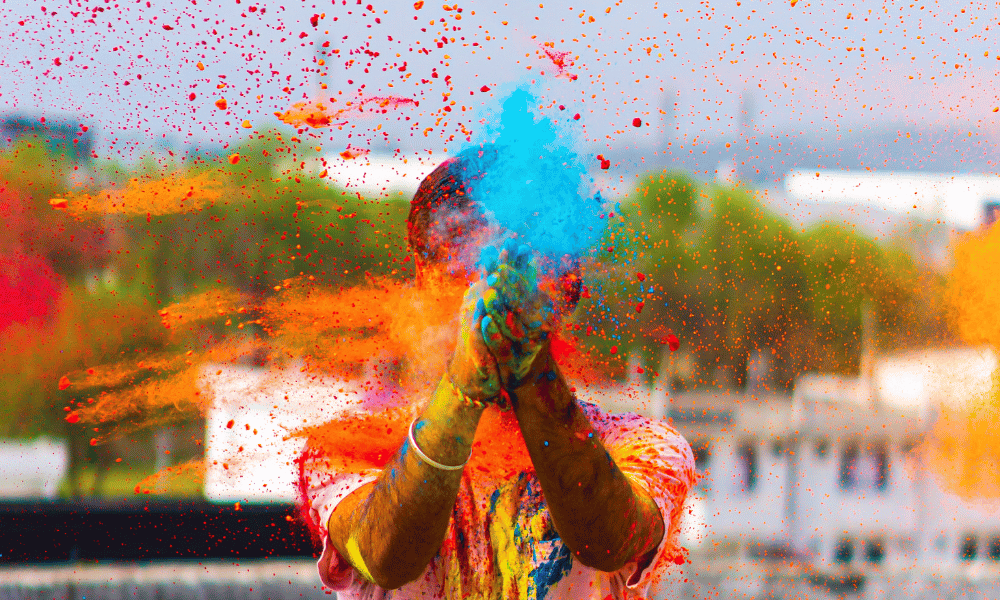
Main Events During the Holi Festival
The heartbeat of the Holi festival lies in its main events, each carrying a unique traditional significance and bringing communities together in a joyous and vibrant celebration. In this section, we delve into the key events that mark the Holi festival in Nepal, exploring the stories, rituals, and traditions that encompass them.
Holika Dahan: The Burning of the Holika
Symbolism of Holika Dahan
-
Victory of Good over Evil: The ritual signifies the victory of good over evil, with the burning of the Holika representing the destruction of negative forces and the triumph of positivity.
-
Purification Ritual: It also serves as a purification ritual, encouraging individuals to let go of negativity and embrace new beginnings with purity of heart and mind.
The Ritual
-
Gathering of Communities: Communities come together to gather wood and other materials to create a bonfire, symbolizing the burning of Holika.
-
Prayers and Offerings: The evening witnesses prayers and offerings, with individuals seeking blessings for prosperity and protection from evil forces.
Lathmar Holi: The Play with Sticks and Shields
Historical Background
-
Radha and Krishna: This tradition traces back to the playful antics of Radha and Krishna. It is believed that Krishna teased Radha and her friends, who responded by playfully hitting him with sticks.
-
Representation of Playfulness: This event captures the spirit of playfulness and joy that characterizes the romantic tales of Radha and Krishna.
The Celebration
-
Women versus Men: In this vibrant event, women playfully hit men with sticks, who defend themselves with shields, engaging in a friendly mock battle.
-
Music and Dance: Accompanying the playful battles are music and dance, adding to the festive spirit and joyous atmosphere.
Phagu Purnima: The Celebration with Colors
Significance
-
Welcoming Spring: This event marks the welcoming of the spring season, a time of joy, renewal, and blossoming of nature.
-
Community Bonding: It fosters community bonding, as individuals indulge in playful exchanges of colors, coming together in a spirit of unity and togetherness.
Celebration Details
-
Color Play: Streets come alive with people smearing each other with vibrant colors, engaging in a joyous celebration that breaks barriers and fosters friendships.
-
Water Games: Apart from colors, water games are a popular part of the celebration, with people playfully dousing each other with water.
Chir Haran: The Ritual of Tree Worship
Historical Roots
-
Ancient Tradition: This is an ancient tradition that honors nature, embodying the deep-seated reverence for trees and the environment that is intrinsic to Nepalese culture.
-
Connection with Lord Krishna: The ritual also connects with the tales of Lord Krishna, symbolizing his playful nature and deep connection with nature.
The Ritual
-
Gathering Around Trees: Communities gather around trees, engaging in prayers and rituals that seek to honor and worship the trees.
-
Offerings and Decorations: The trees are adorned with colorful decorations and offerings, embodying the spirit of respect and reverence for nature.
The main events of the Holi festival in Nepal are a vibrant tapestry of rituals and celebrations that embody the rich cultural and spiritual heritage of the region. From playful exchanges to solemn rituals, these events capture the essence of Holi, bringing communities together in a joyous and harmonious celebration.
Special Attractions of Holi Festival
A true embodiment of the festive spirit of Holi can be witnessed in the myriad special attractions that grace the occasion. From pulsating musical events to captivating dance and art performances, these attractions add a touch of glamour and festivity, turning the celebration into a grand spectacle. Let’s explore these vibrant attractions in detail:
Musical Events
Traditional Music
-
Folk Music: The Holi festival is accentuated with the resonant tunes of traditional folk music, echoing the rich musical heritage of Nepal. Groups of musicians wander through the streets, filling the air with melodious tunes that signify the festive spirit.
-
Bhajans and Kirtans: Devotional songs, known as Bhajans, and Kirtans are an integral part of the celebration. These spiritual renditions evoke a sense of devotion and reverence during the festival.
Contemporary Music
-
Live Concerts: As the festival transcends into a modern celebration, live concerts featuring contemporary artists become a highlight. These concerts become a melting pot where traditional and modern music genres coalesce.
-
DJ and Electronic Music: To cater to the younger generation, DJ nights and electronic music sessions are organized, where people groove to the beats and celebrate Holi in a more contemporary style.
Dance and Art Performances
Traditional Dance
-
Classical Dance Performances: The festival witnesses spellbinding performances of classical dances, portraying tales from Hindu mythology and reflecting the rich cultural tapestry of Nepal.
-
Folk Dance: Different communities showcase their unique folk dances, turning the festival into a vibrant and lively showcase of cultural diversity.
Art Installations and Exhibitions
-
Street Art: The festival sees an emergence of vibrant street art, with artists using the streets as their canvas to depict the vibrant hues of Holi.
-
Art Exhibitions: Various art exhibitions are organized, showcasing the works of local artists who draw inspiration from the festival, creating artworks that echo the spirit of Holi.
The special attractions during the Holi festival in Nepal serve as a testament to the vibrant and rich cultural heritage that the country embodies. These events provide an avenue for artists and performers to showcase their talents, turning the festival into a grand cultural extravaganza.
Holi Festival in Kathmandu
The celebration of Holi in Nepal is a kaleidoscope of vibrant customs, rituals, and festivities, which vary distinctively across different regions. In this section, we venture into the heart of Nepal, Kathmandu, to witness how the festival is celebrated with a blend of tradition and modernity, highlighting the popular spots and traditional customs that define Holi in the capital city.
Traditional Customs
-
Holika Dahan at Kathmandu Durbar Square: Kathmandu, steeped in history and tradition, celebrates Holi with ancient customs. The celebration begins with the Holika Dahan at Kathmandu Durbar Square, where people gather to witness the symbolic burning of Holika, marking the victory of good over evil.
-
Chir Haran at Basantapur: The historic Basantapur area witnesses the ritual of Chir Haran, a unique tradition that involves tree worship and offerings, echoing the deep connection between the festival and nature.
Popular Spots for Celebrations
-
Thamel: Recognized as the heart of Kathmandu, Thamel turns into a vibrant hub during Holi, attracting locals and tourists alike. The streets are adorned with colors, and the air reverberates with music, as people indulge in playful exchanges of colors and water.
-
Durbar Square: This UNESCO World Heritage Site becomes a focal point for cultural festivities. With traditional music and dance performances, the square turns into a vibrant space where tradition meets modernity.
-
Patan and Bhaktapur: Apart from Kathmandu, the neighboring cities of Patan and Bhaktapur also host grand Holi celebrations. The cities, known for their rich cultural heritage, witness an amalgamation of traditional and contemporary celebrations, making them popular spots for experiencing Holi.
You can further explore how the Holi festival is celebrated in other regions of Nepal, showcasing the diversity and richness that marks the celebration across the country. You can detail the unique customs, traditions, and popular spots that make Holi a unique experience in each region.

Holi in Terai Region of Nepal
Nestled in the southern part of Nepal, the Terai region is home to a vibrant and diverse culture. When it comes to Holi, the region boasts an array of unique traditions and customs that provide a different hue to the festival. Let’s unfold the distinct ways in which the people of Terai celebrate Holi:
Faguwa
-
Time-Honored Celebration: In the Terai region, Holi, also known as Faguwa, is celebrated with much fervor and gusto, keeping with time-honored traditions that have been passed down through generations.
-
Extended Celebrations: Unlike other regions, Holi celebrations here extend over two days. The first day is marked by the Holika Dahan, and the festivities continue to the next day with color play.
Rituals and Prayers
-
Morning Prayers: The day starts with morning prayers and rituals. Families gather to offer prayers, seeking blessings for prosperity and well-being.
-
Community Gatherings: The region witnesses community gatherings where people come together to participate in prayers and rituals, fostering a spirit of unity and harmony.
Exchange of Wishes and Delicacies
-
Exchange of Wishes: One of the remarkable aspects of Holi in the Terai region is the warm exchange of wishes among neighbors, friends, and families. People visit each other’s homes, exchanging greetings and good wishes.
-
Delicious Delicacies: The festival is also an occasion to savor a variety of delicious delicacies. Special sweets and dishes are prepared, which are exchanged among neighbors and friends, adding a gastronomic delight to the celebration.
Cultural Performances
-
Folk Music and Dance: The festival is marked by vibrant performances of folk music and dance. Local artists showcase their talent, turning the celebration into a vibrant cultural extravaganza.
-
Community Events: Several community events are organized where people come together to enjoy musical performances, dances, and other cultural displays, adding to the festive spirit.
The Terai region offers a rich and vibrant tapestry of traditions and customs during Holi, providing a unique and colorful perspective to the festival’s celebrations in Nepal. The region, with its distinctive customs, adds a special charm to the Holi festivities, embodying the spirit of unity, joy, and cultural richness.
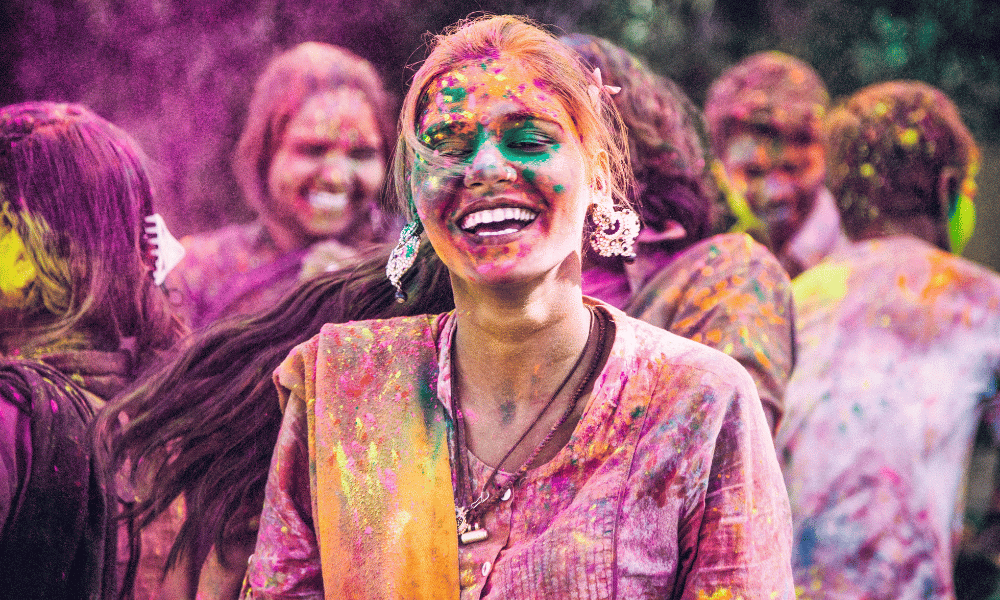
Holi Festival in Pokhara
Pokhara is a great place for tourists to visit because it is next to the peaceful Phewa Lake and has a great view of the Annapurna range. It also has a lot of culture and natural beauty. People often call this city the "tourist capital" of Nepal. Its Holi celebrations are a beautiful mix of old and new, making them a sight to see. Let's look at the different ways Holi is celebrated in Pokhara:
Lakeside Holi
-
Scenic Celebrations: The area around Phewa Lake transforms into a vibrant canvas of colors during Holi. Locals and tourists gather around the lake to enjoy the scenic celebrations, where the natural beauty provides a picturesque backdrop to the festivities.
-
Boat Rides: Special boat rides are organized where people can enjoy the festivities from the serene waters, offering a unique and tranquil experience amidst the vibrant celebrations.
Street Festivals
-
Colorful Parades: The streets of Pokhara come alive with colorful parades, where locals and tourists join in a vibrant procession, dancing to the tunes of traditional music and reveling in the joyous atmosphere.
-
Street Art and Performances: Artists take to the streets to create vibrant artworks and offer live performances, adding a creative touch to the festival.
Cultural Shows and Events
-
Traditional Dance Performances: Cultural shows become a highlight of the celebration, with groups offering mesmerizing dance performances, showcasing the rich cultural tapestry of the region.
-
Music Concerts: Music concerts featuring local bands and artists are organized, where people can groove to the beats and enjoy a musical extravaganza.
Community Engagement
-
Community Feasts: The celebration sees community feasts where people come together to enjoy a range of traditional delicacies, fostering a spirit of unity and harmony.
-
Tourist Engagement: Being a tourist capital, special events are organized to engage tourists, offering them an opportunity to immerse themselves in the local culture and festivities.
Holi is celebrated in Pokhara, which shows that the city has a rich cultural history and a modern, open-minded attitude. The celebrations here are not only true to the traditional spirit of Holi, but they also include elements from around the world. This makes it a unique and memorable event for both locals and tourists.
A well-prepared guide can make the Holi festival in Nepal more enjoyable for people who want to see its beauty. In this part, we tell travelers what they need to know to get the most out of their trip during this busy event.
Best Time to Visit
When the Hindu lunar calendar is in the month of Falgun, which is usually in March, is the best time to take part in the colorful Holi celebrations in Nepal. This time marks the change from winter to spring, and it's a beautiful time to celebrate because flowers are blooming and the sky is clear. People should come a few days before the event to see and be a part of the lively and exciting preparations. The event lasts for two days, and the celebrations in the hilly areas and in the Terai region are very different. To get the most out of Holi in Nepal, plan your trip to overlap with the celebrations in different parts of the country. This will give you a unique look into the diverse cultural fabric of this lively country and let you soak up the festival's joyful spirit among growing nature and happy locals.
Holi Date Variation
-
Lunar Calendar: Holi is celebrated based on the lunar calendar, generally falling in the month of March. However, the exact date varies each year. It's recommended to check the specific date before planning your visit.
-
Weather Considerations: March marks the beginning of spring in Nepal, offering pleasant weather which is neither too hot nor too cold, making it an ideal time to participate in the outdoor festivities of Holi.
Travel Arrangements
Advance Bookings
-
Flights and Accommodation: Given the surge of visitors during the festival, it is advisable to book flights and accommodation well in advance to avoid last-minute hassles and price surges.
-
Local Transportation: Secure your local transportation arrangements beforehand, as the demand for vehicles and guides may increase during the festive season.
Tour Packages
-
Festival Special Packages: Many travel agencies offer special Nepal tour packages designed around the Holi festival, providing a guided experience of the celebrations in various regions.
-
Customized Tours: For those looking for a personalized experience, customized tours can be arranged to include specific attractions and events during the Holi festival.
Safety and Etiquette
Respecting Local Customs
-
Participation in Rituals: While participating in rituals and events, it's important to show respect towards local customs and traditions. Following the guidance of locals can enhance your experience.
-
Dress Code: Adhering to a modest dress code during the festivities is appreciated, to respect the local culture.
Safety Measures
-
Protecting Your Belongings: During the festivities, ensure to safeguard your belongings, as the celebrations can get quite boisterous.
-
Skin and Eye Protection: Given the use of colors during the festival, taking necessary precautions to protect your skin and eyes is recommended.
Photography and Videography
Seeking Permission
-
Photographing Locals: Before photographing locals, especially during religious rituals, it is courteous to seek their permission.
-
Drone Photography: If planning to use drones for photography, make sure to adhere to local regulations and guidelines.
Capturing the Moments
-
Festival Photography Tours: Many agencies offer photography tours, guiding you to the best spots to capture the vibrant moments of the festival.
-
Community Engagement: Engaging with the local community can provide deeper insights and opportunities for authentic and heartwarming photographs.
Being well-prepared can greatly enhance your Holi experience in Nepal, allowing you to immerse yourself fully in the vibrant and joyous celebration, while respecting and appreciating the rich cultural tapestry of the country.
Participating in the Festival
Holi in Nepal isn't just about seeing the bright colors and happy mood; it's also about getting into the spirit of the festival and joining in with the locals as they celebrate. In this area, we give tips and ideas for travelers who want to take part in the Holi festival, so they can have a real and meaningful experience.
Getting Involved
Community Gatherings
-
Local Communities: Engage with local communities by participating in community gatherings where you can join locals in the celebrations, playing with colors, and enjoying traditional music and dances.
-
Cultural Programs: Many regions organize cultural programs where visitors can witness traditional performances and even participate in dance and music events.
Volunteer Opportunities
-
Community Service: Some organizations offer volunteer opportunities where travelers can assist in organizing community events and festivities, providing a deeper understanding of the festival’s significance.
-
Art and Craft Workshops: Participate in art and craft workshops organized by local communities, where you can learn about the traditional art forms associated with the festival.
Celebrating Responsibly
Using Eco-Friendly Colors
-
Environmentally Friendly: Opt for eco-friendly colors available in the market to celebrate Holi, promoting a healthier and safer environment.
-
Personal Care: Ensure to use skin-friendly colors to avoid any skin irritations or allergies.
Respectful Engagement
-
Consent is Important: When playing with colors, always ensure to seek consent from others, promoting a respectful and enjoyable atmosphere for all.
-
Avoiding Wastage: While enjoying the water fights that are a part of the festival, be mindful to avoid wastage of water, adhering to the principles of responsible celebration.
Learning and Experiencing
Cooking Classes
-
Traditional Delicacies: Attend cooking classes where you can learn to prepare traditional delicacies associated with Holi, adding a gastronomic delight to your experience.
-
Home Hosted Meals: Experience the warmth of Nepalese hospitality by enjoying home-hosted meals, where you can savor traditional dishes and interact with local families.
Workshops and Seminars
-
Cultural Understanding: Participate in workshops and seminars organized by cultural centers, offering insights into the historical and cultural significance of the festival.
-
Language Classes: Attend language classes to learn basic Nepali phrases, enhancing your interaction with the locals and enabling a more immersive experience.
Actively participating in the Holi festival allows travelers to not just witness, but to truly experience the vibrant culture and traditions of Nepal. By engaging responsibly and immersively, one can take back memories and experiences that are both enriching and heartwarming.
Dos and Don'ts While Celebrating Holi Festival
When people go to Nepal to see and take part in the fun Holi events, it's important to remember that there are certain rules that should be followed. Here is a short list of "Dos and Don'ts" that will help you enjoy the event in a responsible and polite way.
Dos
1. Dress Appropriately
-
Traditional Attire: Consider wearing traditional attire to blend in and show respect to the local culture.
-
Old Clothes: It is advisable to wear old clothes as they are likely to get stained with colors during the celebrations.
2. Protect Your Valuables
-
Water-Resistant Covers: Use water-resistant covers for your mobile phones and other valuable items to protect them during the color play.
-
Secure Staying Place: Ensure to secure your valuables at your staying place before heading out to participate in the festivities.
3. Use Eco-Friendly Colors
-
Safe for Skin: Opt for colors that are safe for the skin to prevent allergic reactions and other skin issues.
-
Environment-Friendly: Choose colors that are eco-friendly to avoid causing harm to the environment.
4. Engage with the Local Community
-
Community Events: Participate in community events to gain a deeper insight into the cultural significance of the festival.
-
Learning Local Traditions: Engage with locals to learn about the traditions and rituals associated with the festival.
Don'ts
1. Don’t Force Participation
-
Consensual Color Play: Do not force anyone to participate in the color play. Always seek consent before applying colors to someone.
-
Respect Personal Space: Be respectful of personal boundaries and avoid engaging in activities that may make others uncomfortable.
2. Don’t Waste Resources
-
Avoid Water Wastage: Be mindful of water usage during the festival to avoid unnecessary wastage.
-
Minimize Plastic Use: Try to minimize the use of plastic items during the celebrations to reduce environmental impact.
3. Don’t Engage in Unsafe Practices
-
Avoid Harmful Substances: Do not use colors with harmful substances that can cause skin irritations or allergies.
-
Avoid Rowdy Behavior: Steer clear of engaging in rowdy behavior that could potentially cause harm or discomfort to others.
4. Don’t Violate Cultural Norms
-
Respect Religious Sites: Show respect towards religious sites and avoid indulging in activities that are considered disrespectful.
-
Follow Local Guidelines: Abide by the local guidelines and regulations that govern the celebrations to ensure a respectful and harmonious environment.
Observing these "Dos and Don'ts" will not only ensure your safety but also help you to enjoy a fulfilling and respectful celebration. Being mindful of your actions and showing respect to the local customs and traditions will go a long way in making your Holi experience in Nepal truly memorable.
In the end
As we come to the end of our journey through the rich tapestry of traditions, colors, and joy that make up the Holi festival in Nepal, we can't help but be amazed by the deep cultural richness and community peace that this festival fosters in the heart of the Himalayas.
Reflection on the Festival in Nepal
-
A Mosaic of Culture and Tradition: The Holi festival in Nepal is a living, breathing mosaic of ancient traditions and contemporary celebrations, binding communities together in a riot of colors and shared joys. It stands as a vivid testament to Nepal's rich cultural heritage, deeply entrenched in spirituality and communal unity.
-
A Symbol of Renewal and Rejuvenation: Reflecting the vibrant hues of spring, Holi ushers in a time of renewal and rejuvenation. It is a time when the entire nation blossoms, not just with the vibrant flora but with the laughter and unity of its people coming together, transcending boundaries and forging bonds anew.
-
Embodiment of Unity and Diversity: As we have traversed through the different regions of Nepal, we have witnessed the unique and diverse ways in which Holi is celebrated. It's a poignant reminder of the harmonious blend of diversity and unity that characterizes this beautiful nation, as communities with varied traditions and customs come together to celebrate the essence of life and togetherness.
Invitation to Experience Holi in Nepal
-
A Personal Invitation to Witness Vibrancy: As we draw this narrative to a close, we extend a heartfelt invitation to you, dear reader, to immerse yourself in the vibrant and joyous celebrations of Holi in Nepal. It is an experience that transcends mere observation, inviting you to become a part of a rich tapestry of culture, tradition, and communal harmony.
-
Creating Cherished Memories: We invite you to be a part of this magnificent festival, to create cherished memories painted in the vibrant hues of Holi, accompanied by the melodies of traditional songs, the warmth of newfound friendships, and the delightful flavours of Nepali delicacies.
-
An Invitation to Connect: By experiencing Holi in Nepal, you are not just attending a festival, but forming a profound connection with the land and its people, understanding their joys, their traditions, and their way of life on a deeper level.
The Holi festival in Nepal is a once-in-a-lifetime chance to immerse yourself in a lively and enriching cultural experience. It's a chance to see for yourself how this festival promotes living customs and community unity. We hope to see you at Holi in Nepal, a festival with a lot of colors, happy parties, and deep friendship that will make your heart feel warm and your spirit feel alive.




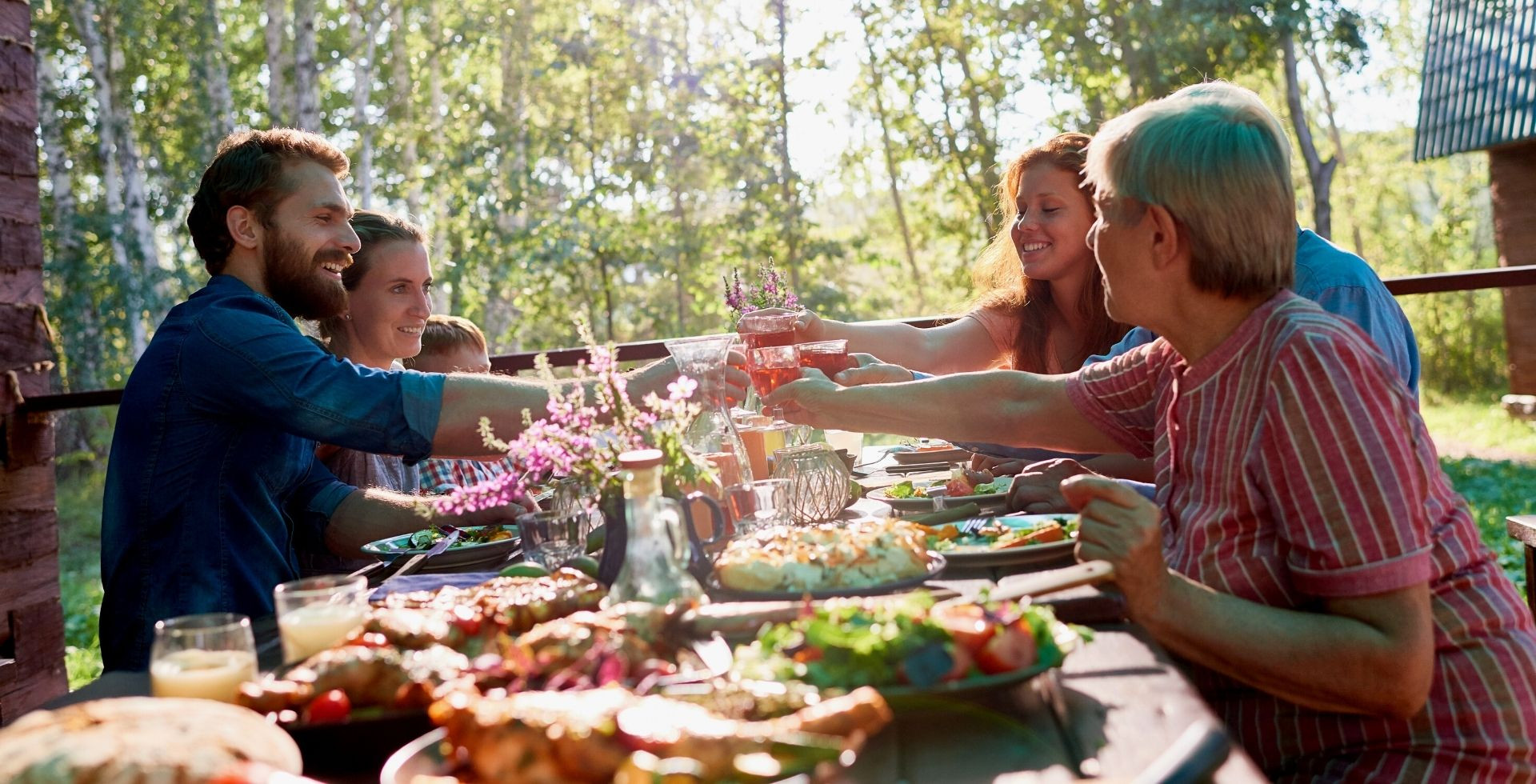
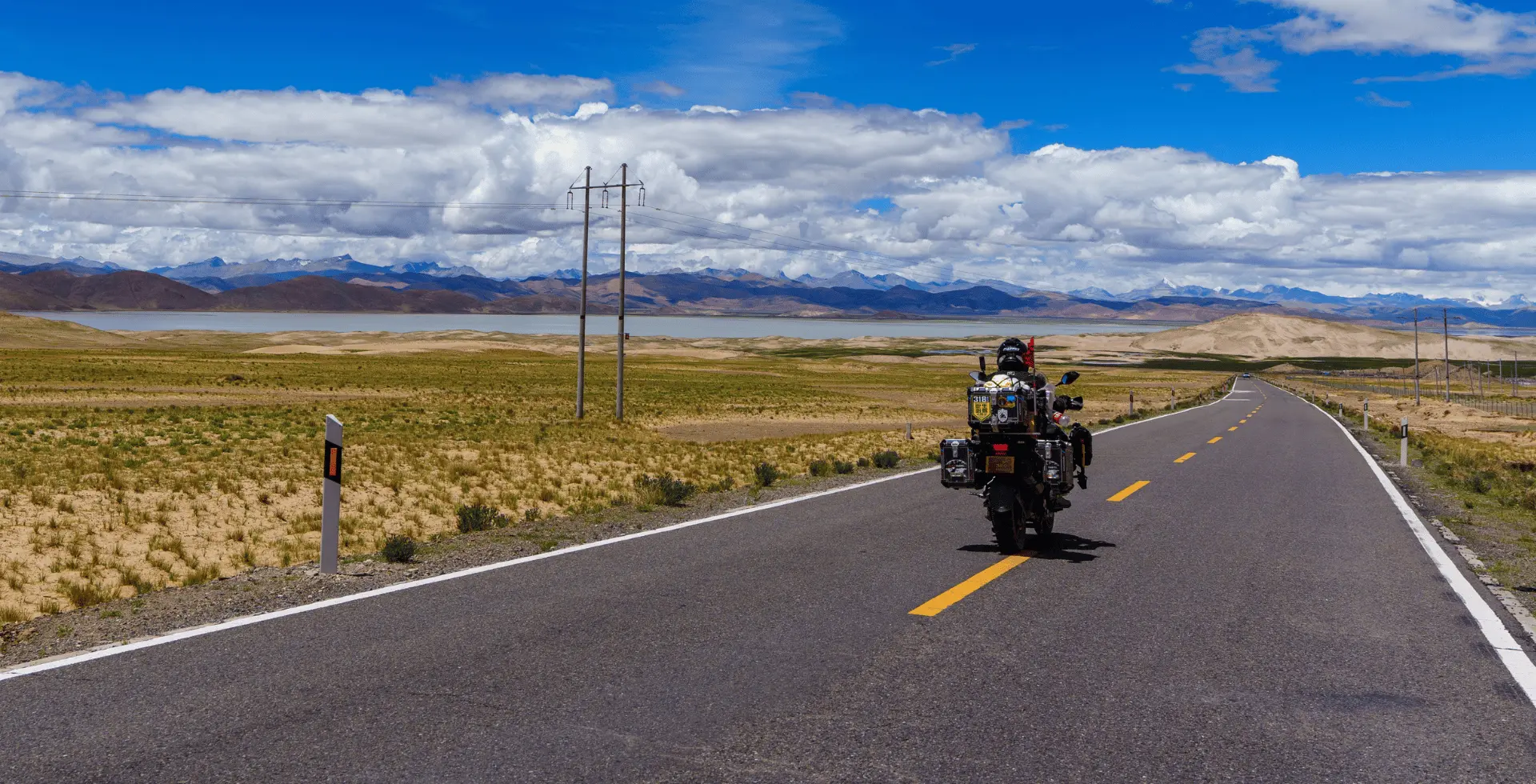
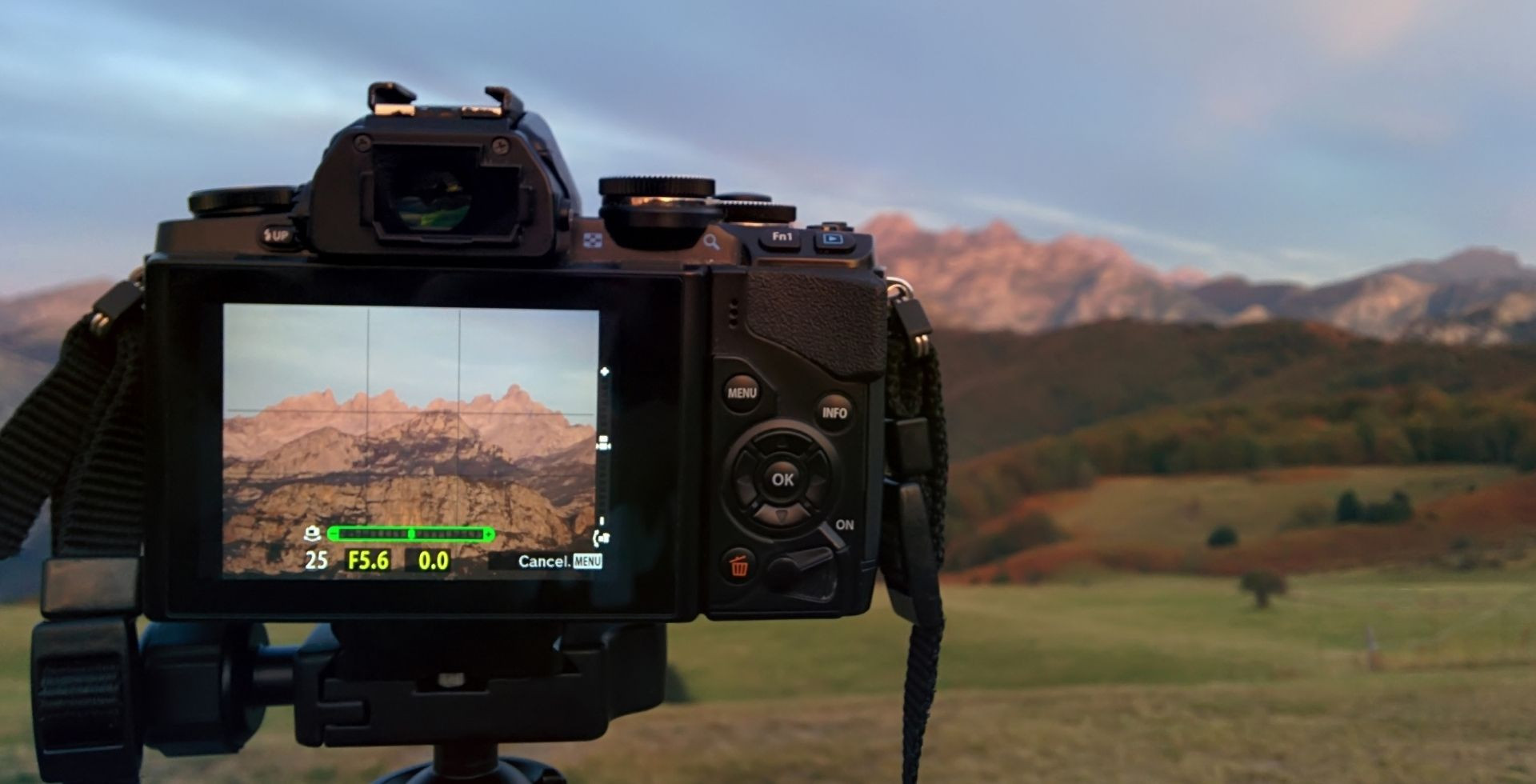

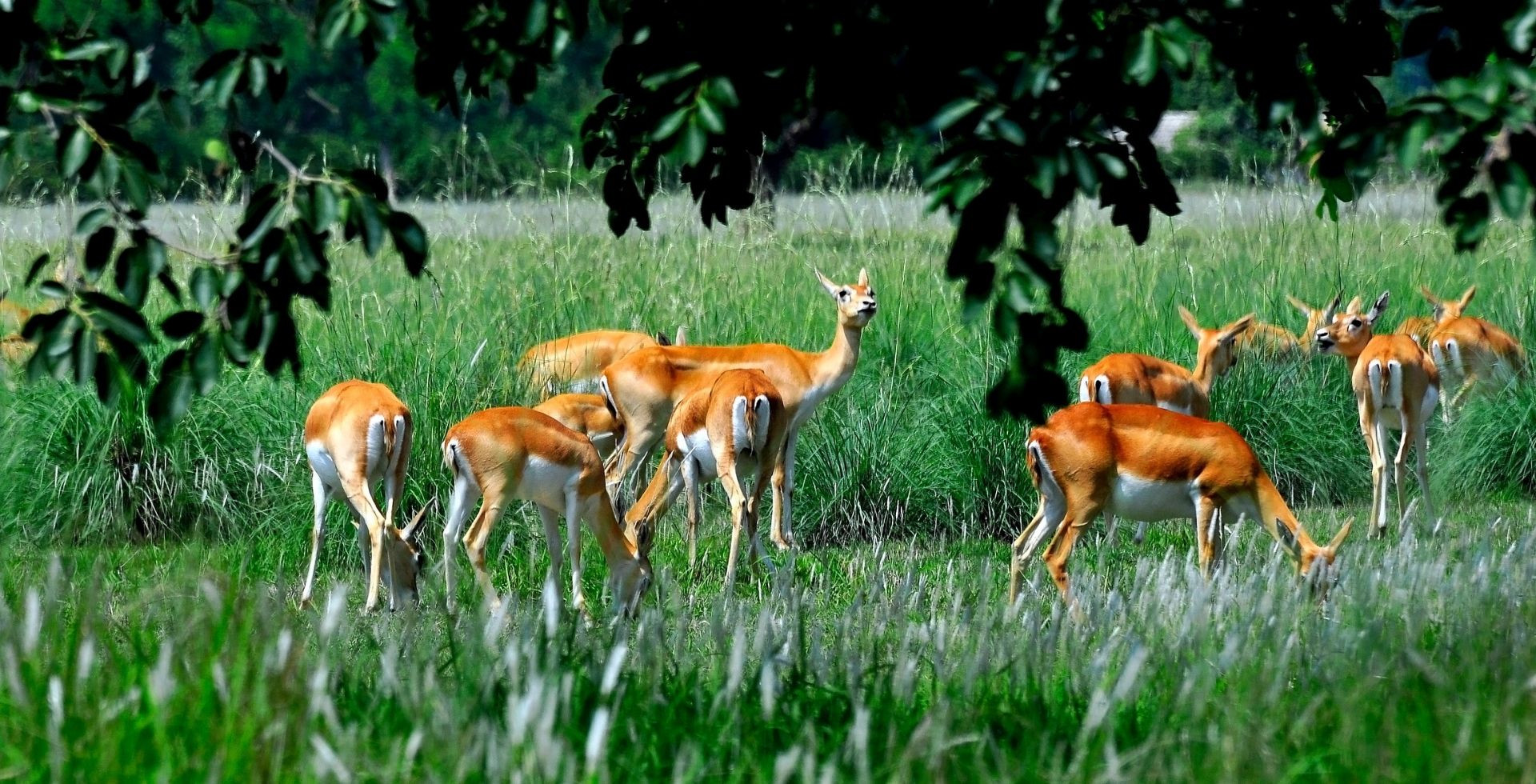
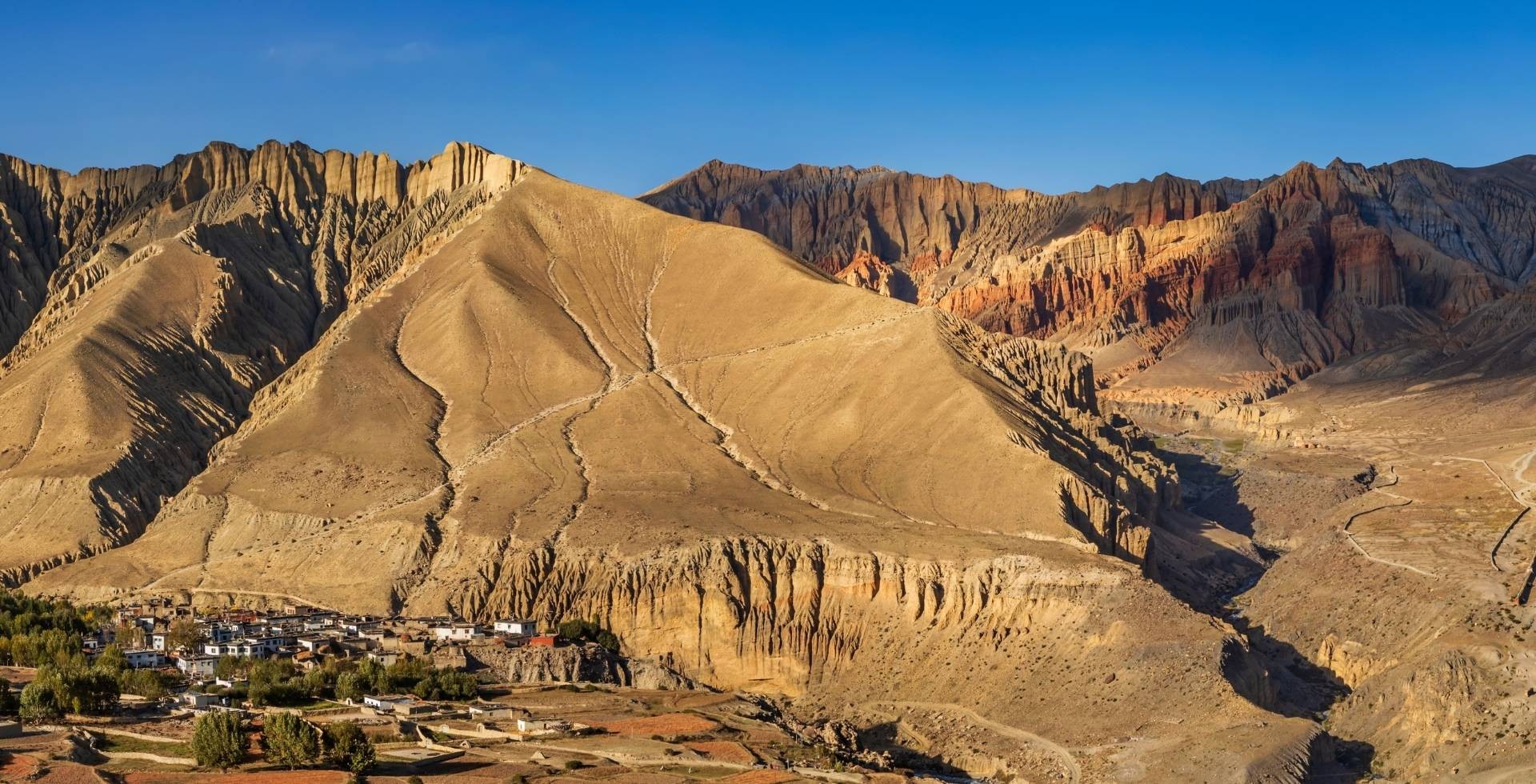

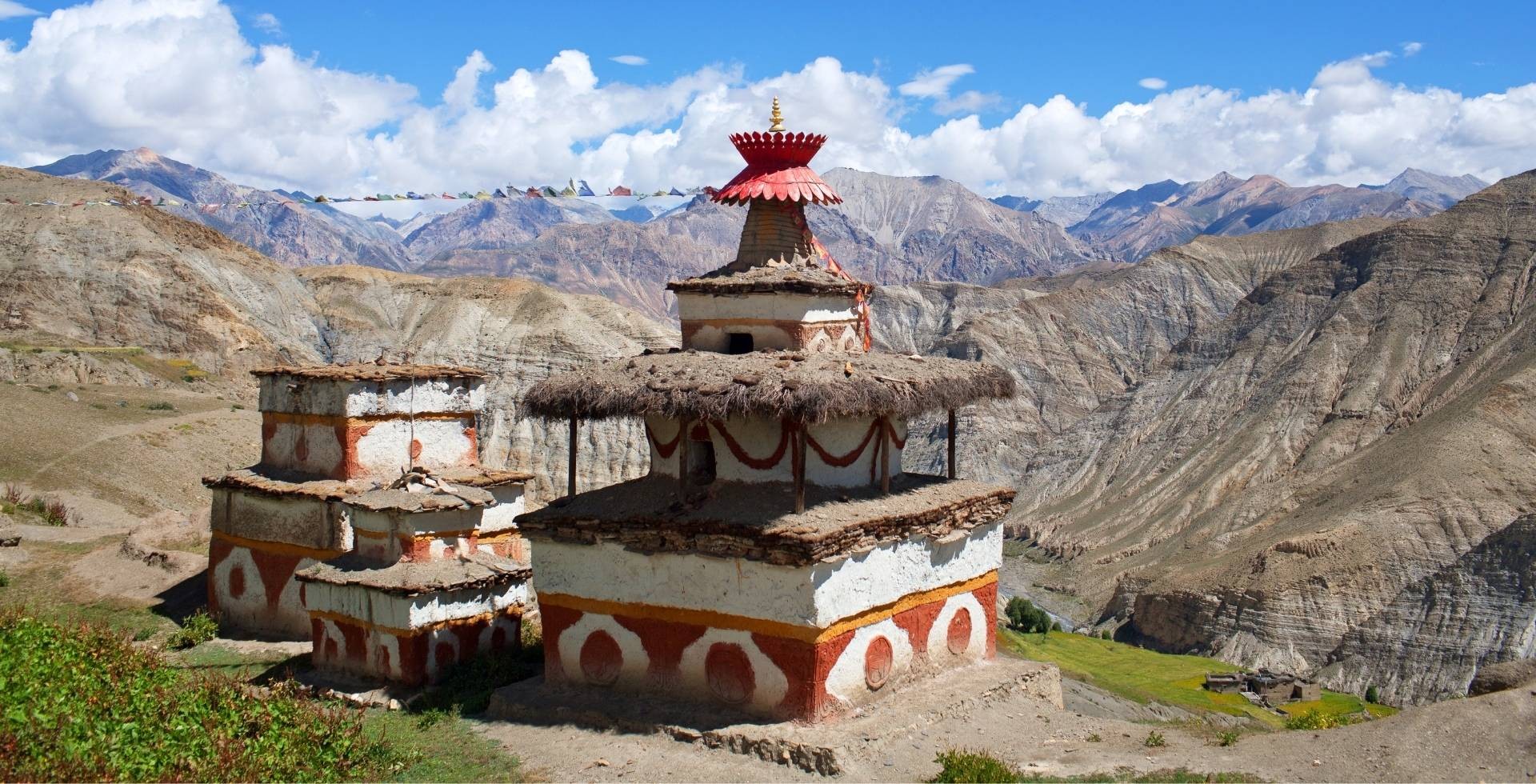
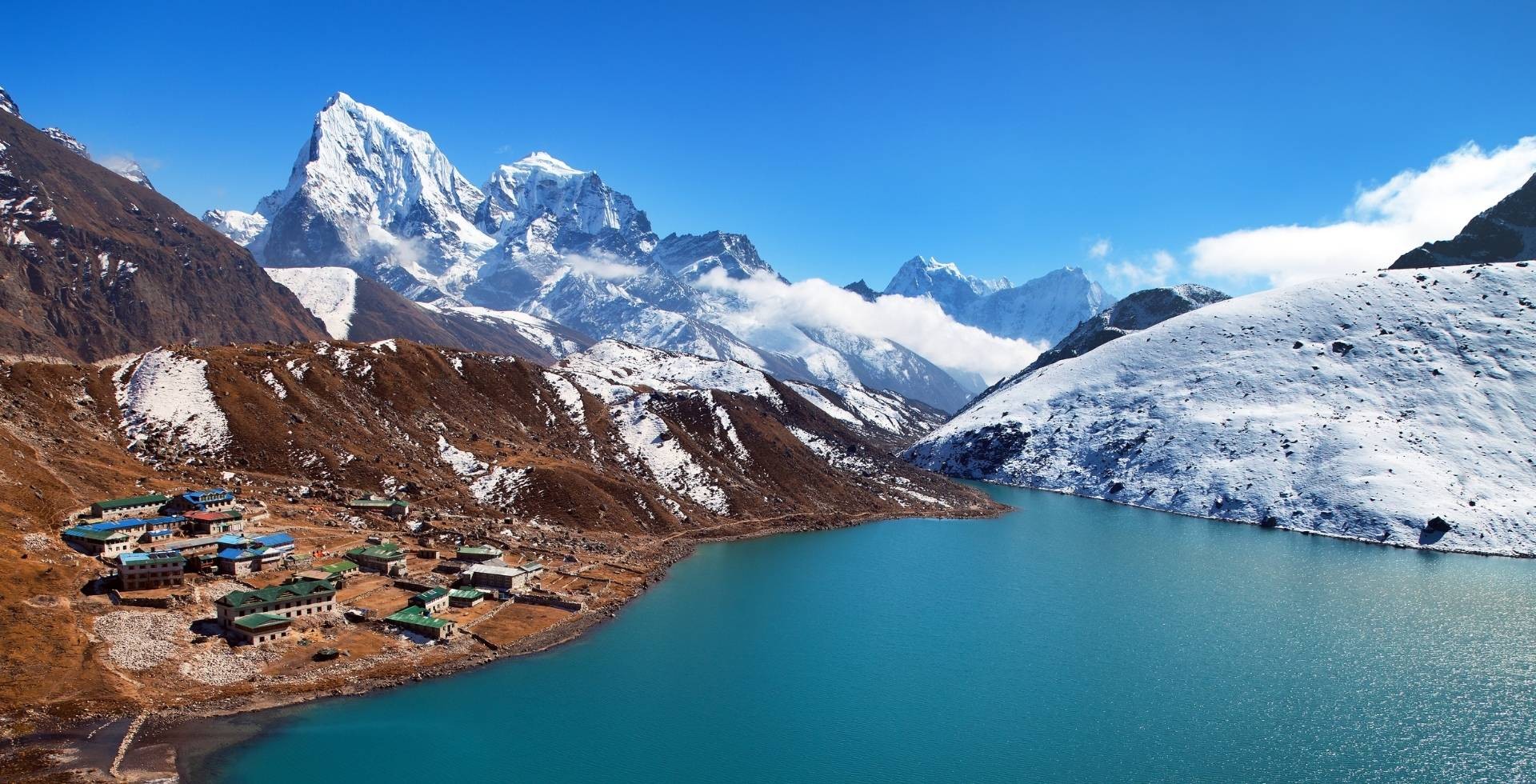

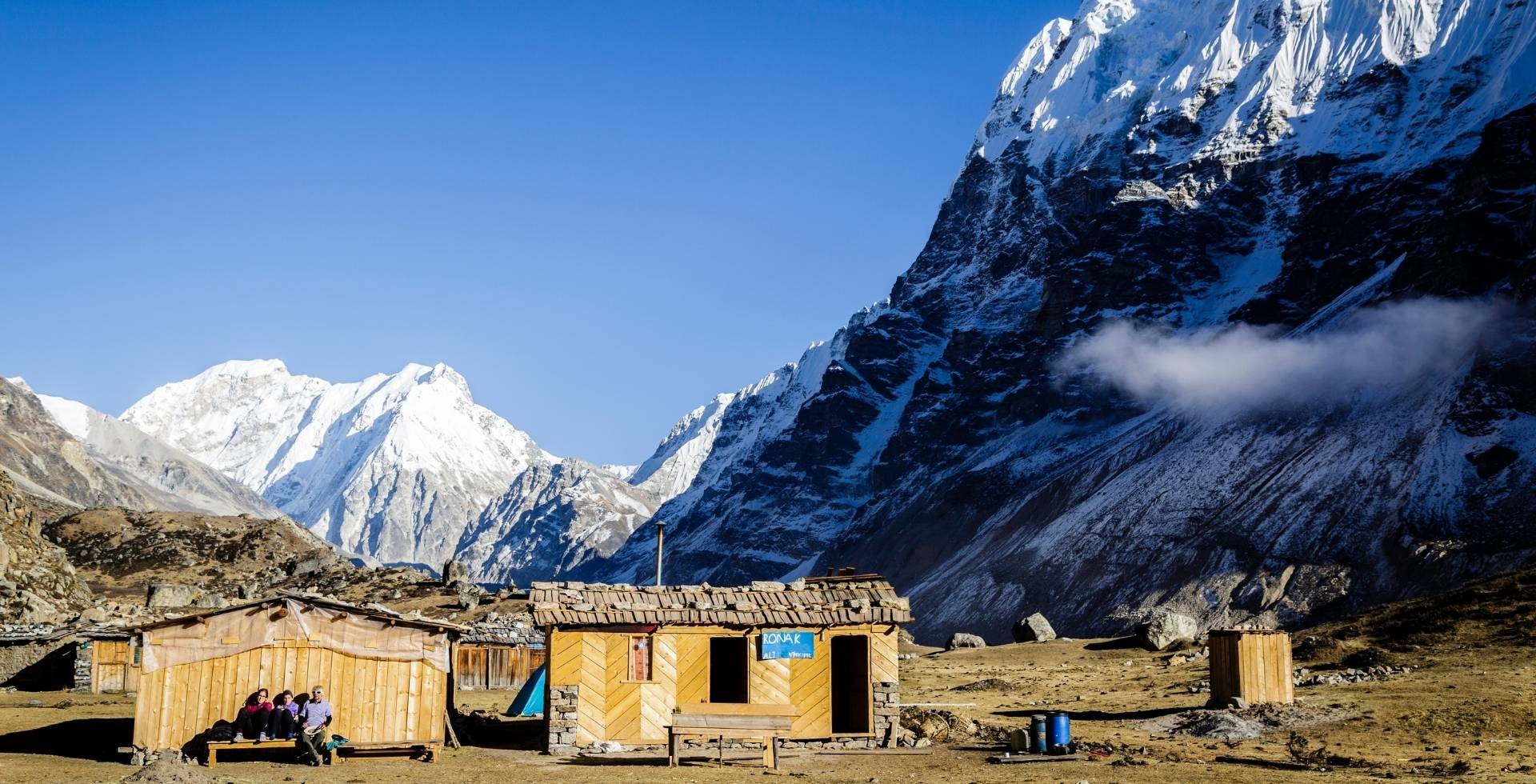
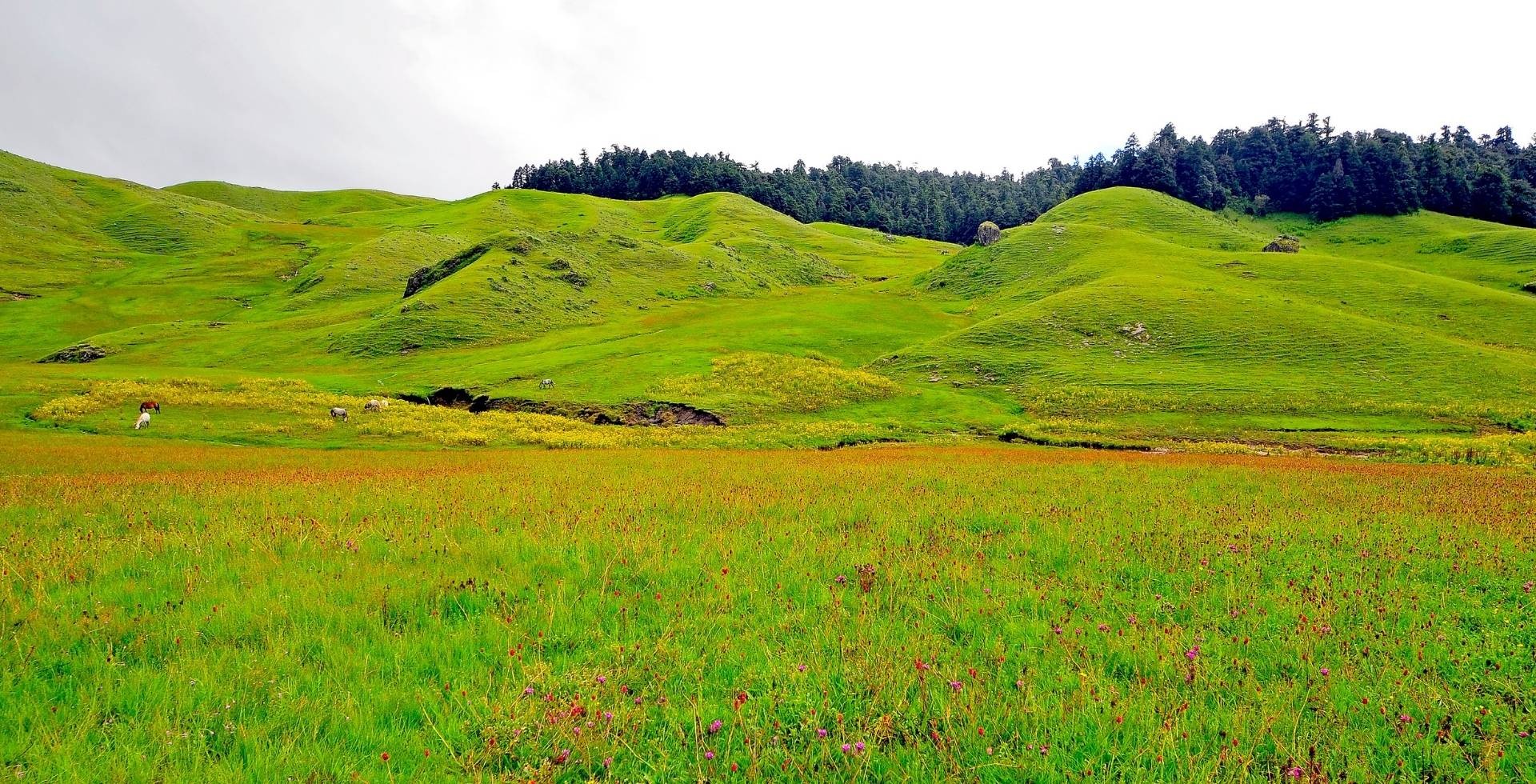
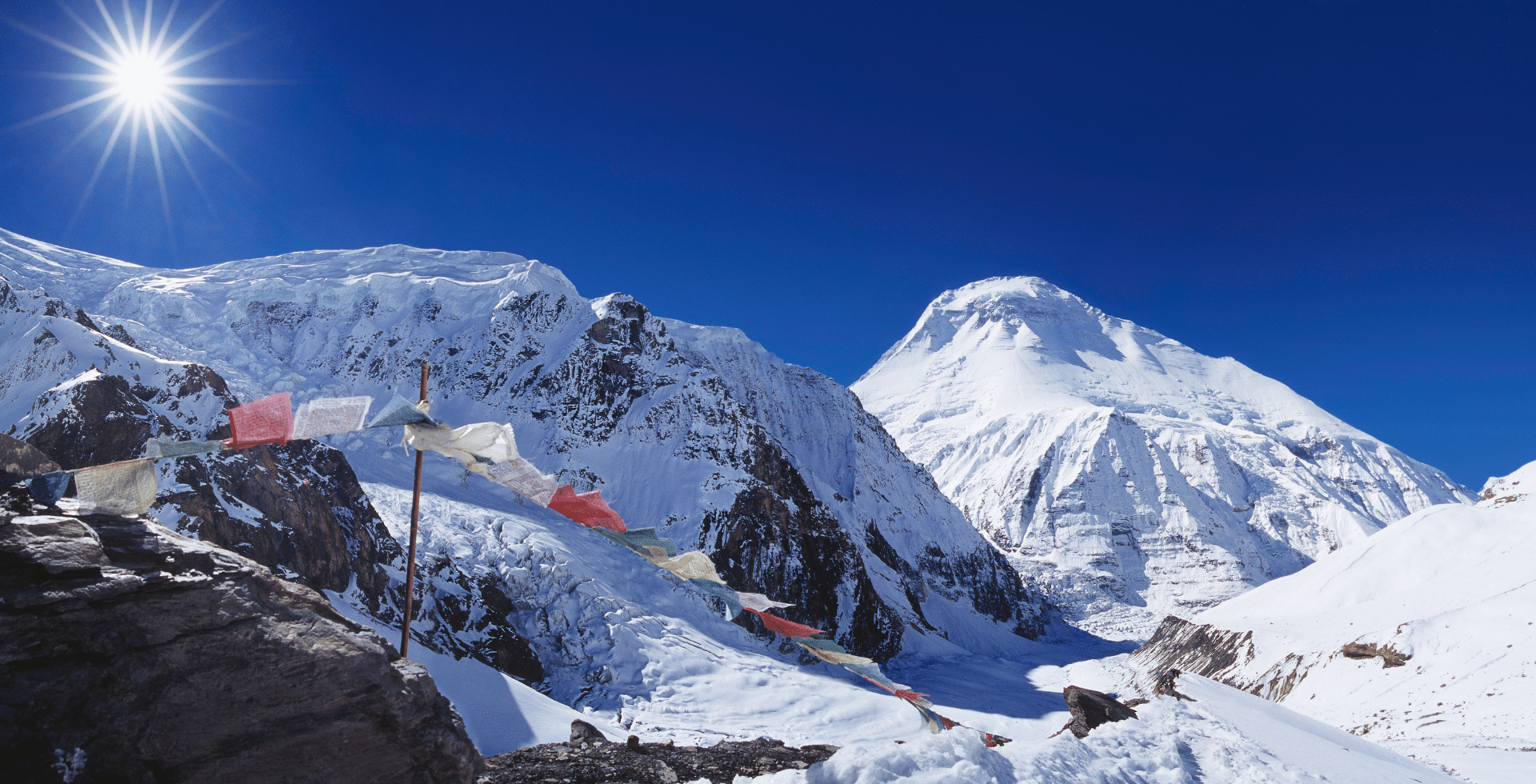
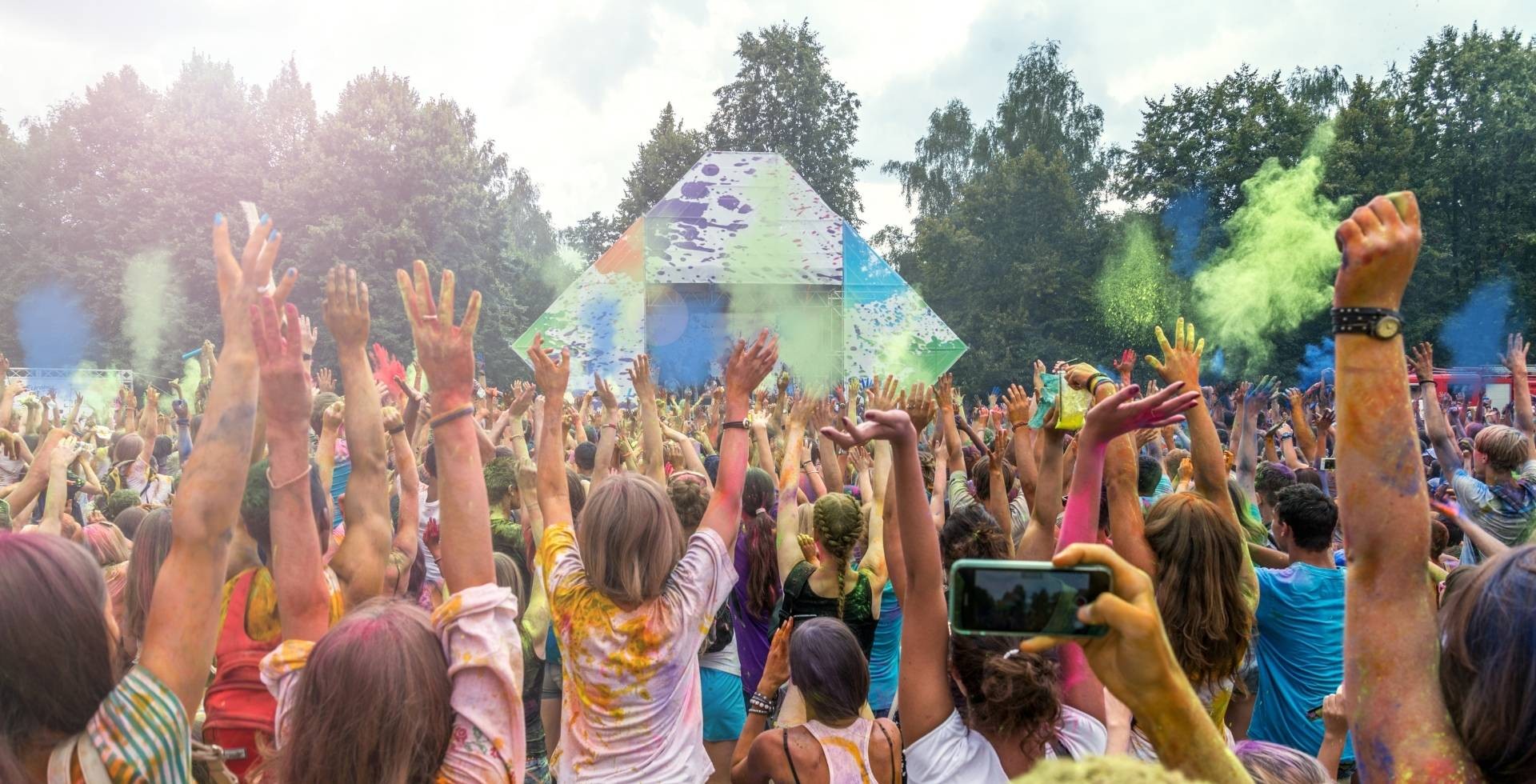
 Deepak Raj Bhatta
Deepak Raj Bhatta